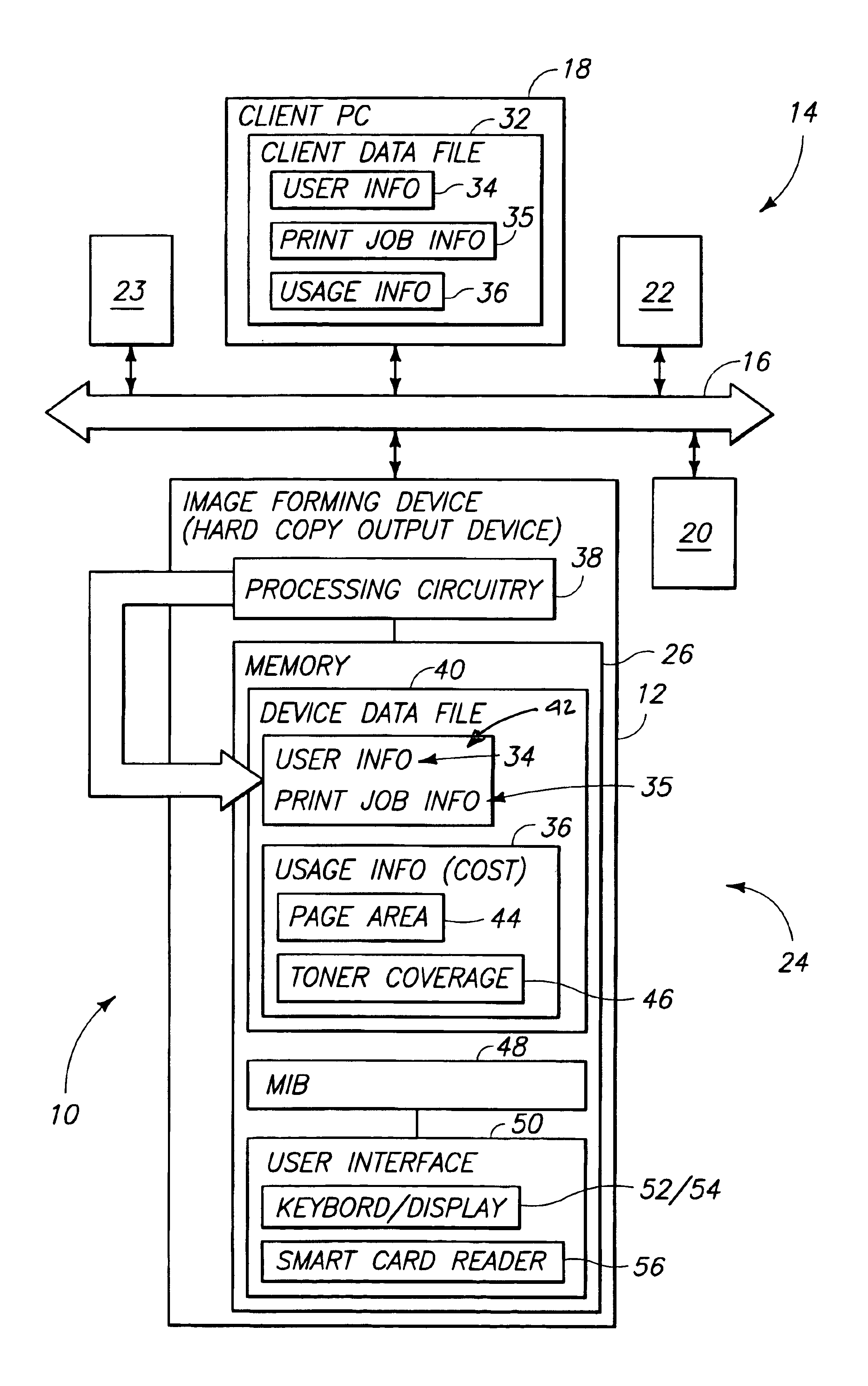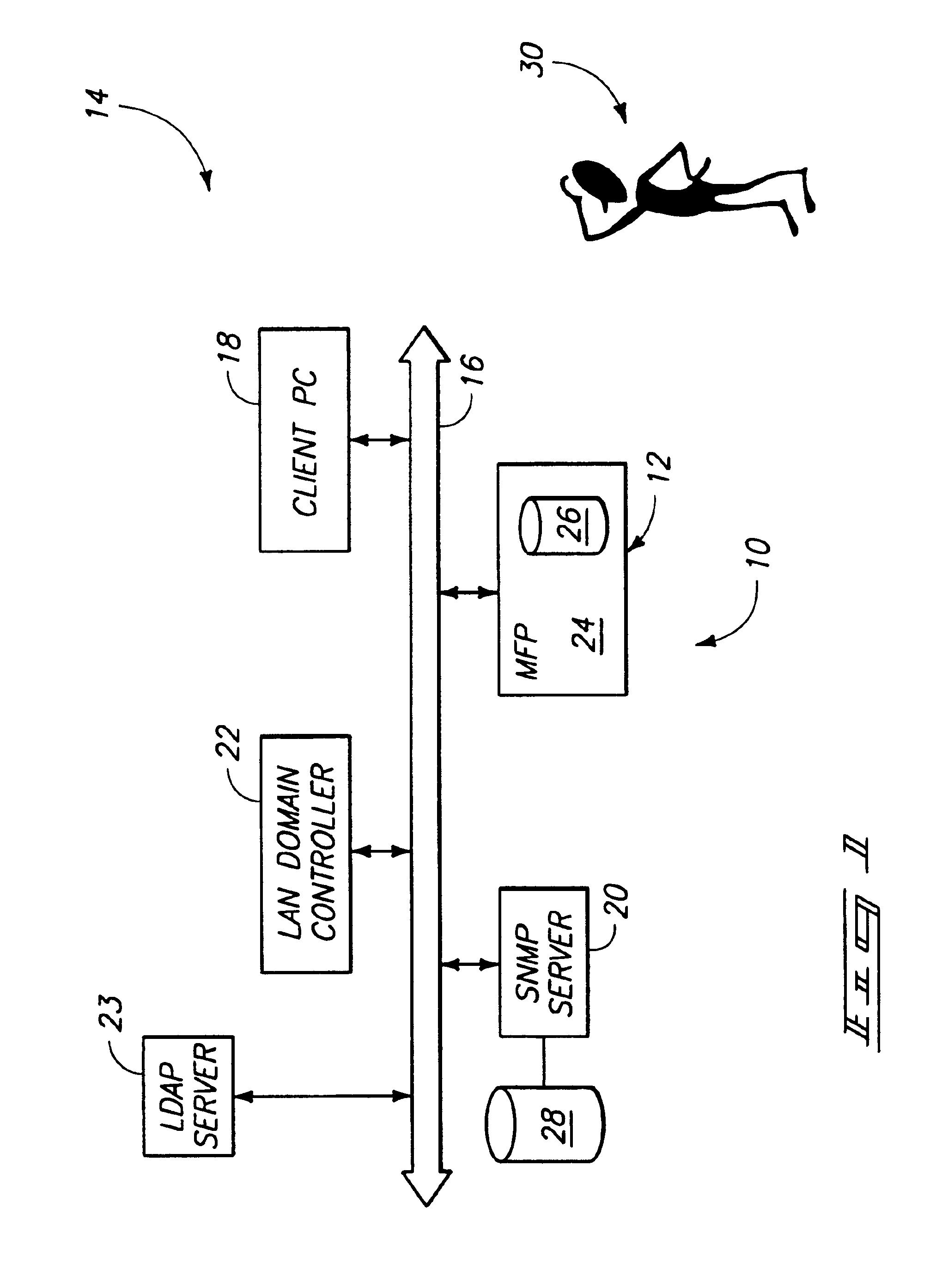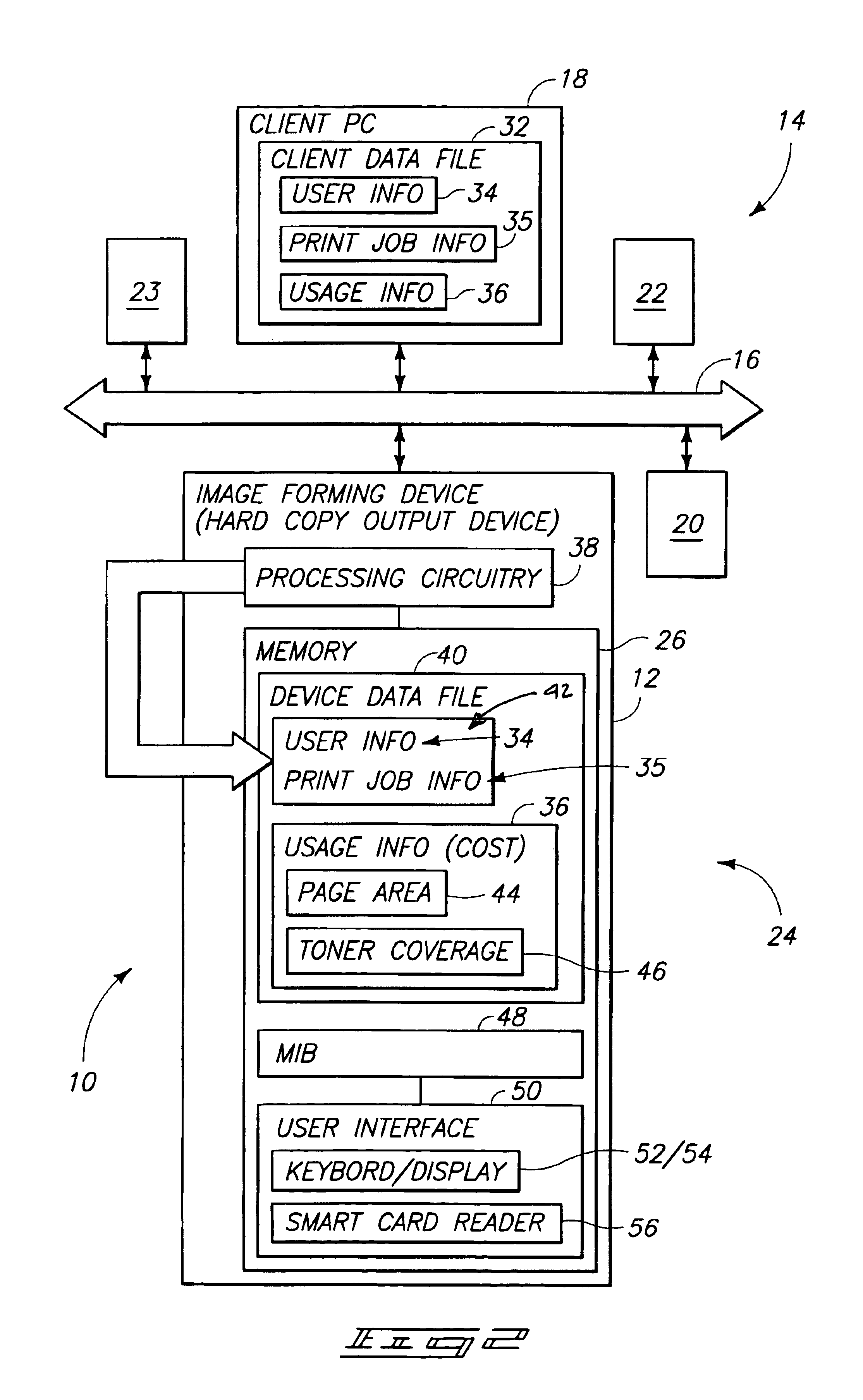Hard copy cost recovery systems, an apparatus for tracking usage information for a hard copy device, hard copy devices, and a usage accounting method
a technology for hard copy and cost recovery, applied in the field of computer systems, can solve the problems of insufficient information made available, incomplete information provided, and inability to track many kinds of print jobs,
- Summary
- Abstract
- Description
- Claims
- Application Information
AI Technical Summary
Benefits of technology
Problems solved by technology
Method used
Image
Examples
example case 1
[0042]For example, a user 30 logs in at his / her PC as shown in FIG. 1, submitting a login name and password. The user's log-in name and password are checked by the domain controller 22. The user then proceeds to create and print a short memo to a network-connected MFP 24. LAN packets carrying the print job to the MFP 24 include the user's LAN log-in name which is trapped by the MFP firmware, and is joined with page-area and toner coverage information when the print job has completed.
[0043]Packet data identifying user 30 and the print job are trapped by the MFP firmware and sequestered on the MFP hard disk or memory 26. When the print job completes, the MFP 24 computes coverage and page area and joins this information to the trapped user / print job information. As print jobs arrive at the MFP 24, MFP 24 builds a data file of user / print job / cost information on its hard disk 26.
[0044]A resulting data file 40 (see FIG. 2) is a census result transaction data file where everything fused in...
example case 2
[0046]A walk-up user 30 desires to make a duplex copy of a two-page, two-sided document. If the user interface 50 (of FIG. 2) forces user 30 to log-in using a LAN-login-name and password, MFP 24 can then trap the user name and time from the data packets it is passing to and from the domain controller 22.
[0047]Alternatively, a swipe card or smart card can be input by a user to smart card reader 56 (of FIG. 2) and be validated locally at MFP 24. In this case, user ID information can still be trapped, sequestered on disk or memory 26, and merged with cost data upon job completion.
[0048]Upon completion of the copy job, the page-area and coverage information can be joined to the user information and sequestered on the MFP's hard disk or memory 26.
[0049]According to another aspect of Applicant's invention, a second key methodology is provided by tracking apparatus 10 wherein hybrid pull-push data gathering is implemented. More particularly, SNMP server 20 on LAN 16 is used to poll image f...
PUM
 Login to View More
Login to View More Abstract
Description
Claims
Application Information
 Login to View More
Login to View More - R&D
- Intellectual Property
- Life Sciences
- Materials
- Tech Scout
- Unparalleled Data Quality
- Higher Quality Content
- 60% Fewer Hallucinations
Browse by: Latest US Patents, China's latest patents, Technical Efficacy Thesaurus, Application Domain, Technology Topic, Popular Technical Reports.
© 2025 PatSnap. All rights reserved.Legal|Privacy policy|Modern Slavery Act Transparency Statement|Sitemap|About US| Contact US: help@patsnap.com



